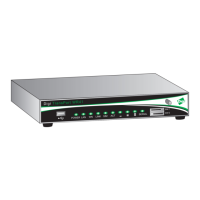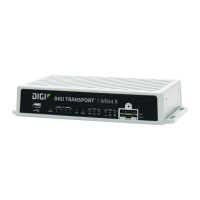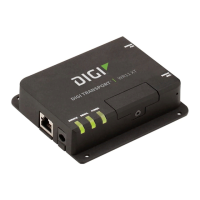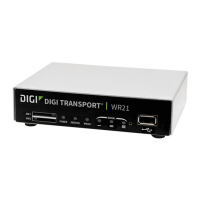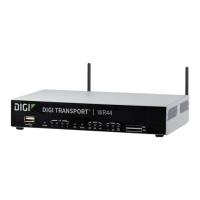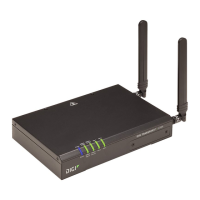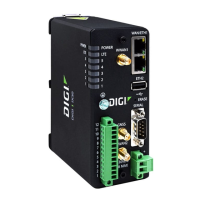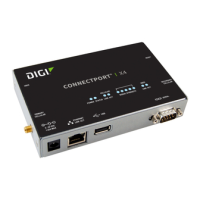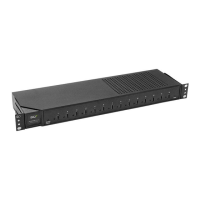Configuring network interfaces Configure ISDN interfaces
Digi TransPort® Routers User Guide
288
Configure ISDNLink Access Protocol D (LAPD) parameters
Link Access Protocol D (LAPD) is the protocol for ISDN D-channel signaling and call setup. You can use
LAPD 0 and LAPD 1 as required for SAPI 16 traffic, such as X.25 over D-channel. LAPD 2 is normally
reserved for ISDN call control.
ÉWeb
1. Go to Configuration > Network > Interfaces > ISDN >LAPD.The ISDNLAPD parameters
page configures the ISDN LAPD interfaces.
2. Configure LAPD interface parameters:
Enable LAPD n
Disabling this parameter disables the LAPD instance. This may be necessary if you have an
installation where two or more routers are connected to the same ISDN S bus. In this case,
only one of the routers may be configured for D-channel X.25 on TEI1, SAPI16. On each of the
other routers you must disable any LAPD instance for which the TEI is set to 1 in order to
prevent it from responding to X.25 traffic on that TEI that is actually destined for another
router.
When checked, this check box will also reveal the following configuration parameters.
Mode
When the DTE/DCE mode parameter is set to DTE, the router behaves as a DTE. This is the
default value and should not be changed for normal operation across the ISDN network. If your
application involves using two routers back-to-back, one of the routers should have the DTE
mode value set to DCE.
N400 Counter
The standard LAPB/LAPD retry counter. The default value is 3 and it should not normally be
necessary to change this.
RR Timer n msecs
The standard LAPB/LAPD Receiver Ready timer. The default value is 10,000ms (10 seconds)
and it should not normally be necessary to change this.
T1 Timer n msecs
The standard LAPB/LAPD timer. The default value is 1000 milliseconds (1 second) and it should
not normally be necessary to change this.
T200 Timer n msecs
The standard LAPB/LAPD re-transmit timer, in milliseconds. The default value is 1000
milliseconds (1 second) and it should not normally be necessary to change this.
TEI
Each ISDN terminal device connected to your ISDN basic rate outlet must be assigned a unique
Terminal Endpoint Identifier (TEI). In most cases, this is negotiated automatically. In some
cases however, it may be necessary to assign a fixed TEI.
When TEI is set to 255, the TEI is negotiated with the ISDN network. To use a fixed TEI set the
TEI parameter to the appropriate value as specified by your service provider.
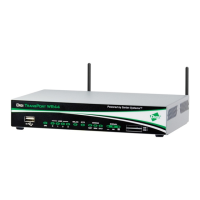
